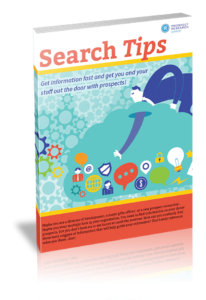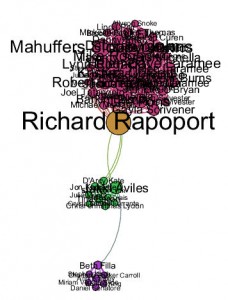When a current client created a job posting for a Research and Prospect Management position a light bulb went off!
Research and Revolutions
Prospect Per
Management Minute
More frequently you’ll see this type of combined role posted as Prospect Management and Research (PMR). But if you reverse that to Research and Prospect Management (RPM) …can you get more speed into your major gift portfolios?
Which comes first – research or prospect management?
Unlike a similar question about chickens and eggs, there is a pretty definitive answer to this question. Research usually comes first in the form of prospect identification.
Most organizations grow into major gifts. A common nonprofit story begins with institutional funding, such as foundations and corporations, who want to support early and continued nonprofit growth. Along the way, nonprofits attract small dollar individual gifts and refine their individual giving program to the point where larger gifts receive more personalized attention and individuals are personally asked for larger gifts.
Usually with the first capital or other campaign, there comes a need to more methodically or reliably identify donor prospects who can give lead campaign gifts. Enter prospect research with major gift prospect identification!
When there are just too many donors requiring personal attention to keep track of in one person’s head, the CRM database comes to the rescue with prospect management. Prospect management provides a systematic way of tracking prospect’s progress from identification to a gift and stewardship.
But what happens to research when prospect management becomes a separate specialty in-house?
Sometimes research and prospect management get out of sync, prompting major gift portfolios to get as stubbornly stuck as a zipper out of alignment!
When research is disconnected from the management of major gift portfolios, various things begin to break down. Sometimes the criteria that research is using to identify prospects does not fit with the funding priorities or the development officer’s views on what makes a great prospect. Research might not be aware of specific regions or development officer portfolios that need more or different prospects than others.
When prospect management is disconnected from research, important information learned from development officers is not passed along. For example, a development officer might learn critical information about a wealth event for which research could provide capacity insight. Also, the prospect manager might not be aware of the criteria used to source new prospects and then they cannot explain it to the development officers.
Adding research in at the “front” of prospect management – the RPM perspective – recognizes that the smooth coordination of prospect identification with portfolio management is where major gift speed is generated.
When the zipper is not aligned, movement is difficult and slow. When there is alignment, the zipper zips easily and quickly.
Similarly, when research and prospect management are aligned, development officers zip through qualifying and disqualifying!
(This all assumes, of course, that development officers are trained in qualification techniques and have a disciplined work process. But that is a different subject!)
Major gift fundraising: Can’t have one without the other
Whether you like to call the work PMR or RPM, the bottom line is that you can’t have one without the other. Without research, pipelines eventually run dry. Without prospect management, development officers lack support to move prospects effectively and efficiently toward a larger, major or transformative gift.
Additional Resources
- Five Things the Disney Movie Frozen Taught Me About Prospect Management | Elisa Shoenberger | Aspire’s Major Gift Insights Blog | 2024
- How connected is your major gifts team to its donors – really? | Jennifer Filla Blog | 2024


 Imagine you emerge from a strategic planning session and your task is to raise more money from corporations. Your organization wants to expand its reach and you need to take the thousands of corporate donors in the database and transform them into a fundraising program. Why? Because everyone “feels” like there is a lot of opportunity there. Where do you start?
Imagine you emerge from a strategic planning session and your task is to raise more money from corporations. Your organization wants to expand its reach and you need to take the thousands of corporate donors in the database and transform them into a fundraising program. Why? Because everyone “feels” like there is a lot of opportunity there. Where do you start?


 There was a cry for help on the PRSPCT-L list-serv: “I’m a new researcher and my boss wants me to provide net worth on a prospect. He says it was the previous practice to do this and I can get what I need to calculate it from Dun & Bradstreet.” What would your response be?
There was a cry for help on the PRSPCT-L list-serv: “I’m a new researcher and my boss wants me to provide net worth on a prospect. He says it was the previous practice to do this and I can get what I need to calculate it from Dun & Bradstreet.” What would your response be?




